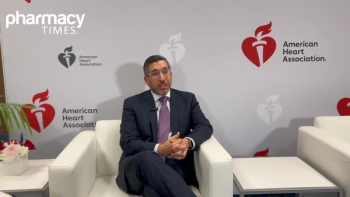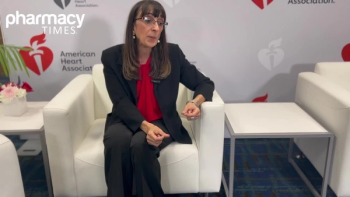
Pharmacy Practice in Focus: Health Systems
- November 2025
- Volume 14
- Issue 6
Improving Disaster Preparedness and Reaction in a Community Medical Center Pharmacy Through Gamification
Key Takeaways
- Pharmacists are vital in disaster response, yet many feel unprepared, highlighting a need for improved training.
- A gamified learning experience, such as a virtual escape room, significantly enhanced pharmacists' perceived preparedness and comfort in emergencies.
Pharmacy team members who participated in a gamified virtual escape room reported higher levels of readiness and confidence to respond to emergency-scenario disaster events.
Abstract
Objectives
Pharmacy involvement in emergency planning and disaster response ensures effective collaboration and coordination among all stakeholders during a crisis. Pharmacists’ unique knowledge and skill set can be invaluable for developing, testing, and coordinating disaster response plans. However, literature suggests that less than 20% of pharmacists feel adequately prepared to respond to a disaster event. Gamification of educational content is 1 method to address this gap. The primary objective of this study was to evaluate pharmacists’ perceived disaster preparedness and comfort with responding to an emergency in the pharmacy before and after a gamified learning experience.
Study Design
In this single-center, pre-postintervention study, pharmacists’ self-reported disaster preparedness and comfort with managing emergency-scenario disaster events in the pharmacy were measured via surveys administered before and after a virtual escape room activity.
Methods
Pharmacy team members at a community hospital were sent a survey in November 2023 that assessed baseline comfort with disaster preparedness and response. Participating team members then completed a disaster response tabletop-style exercise via a virtual, Microsoft PowerPoint–based escape room. After completing the activity, participants were given another survey assessing their perceived disaster preparedness and comfort with responding.
Results
A total of 7 pharmacy team members completed the presurvey, game, and follow-up questionnaire. Using a 1-to-5 Likert Scale (1 = strongly disagree; 5 = strongly agree), the perceived disaster response preparedness among participants improved significantly from pre- to post-intervention (P = .028), with the median (IQR) score increasing from 3.0 (2.5-3.0) to 4.0 (4.0-5.0); participants’ self-reported comfort in responding to emergency-scenario disaster events also increased significantly after the activity (P = .049), from a median (IQR) score of 3.0 (1.5-3.5) pre-intervention to 4.0 (4.0-5.0) post-intervention.
Conclusion
The use of gamification to educate pharmacy team members improved self-assessed disaster preparedness and comfort with responding to an emergency in the pharmacy, highlighting gamified learning as a promising first step toward enhancing overall pharmacist response capability. Future studies should investigate the impact of incorporating real-world scenarios, downtime processes, and emergent medication requests into disaster readiness and response training.
Introduction
Because they are among the most accessible health care professionals, pharmacists are strategically positioned to be involved in every stage of disaster preparedness and response—from mitigation and planning to relief and recovery1-4—and their incorporation into modern preparedness frameworks has become even more important given the increasing frequency of disasters.5 Such events are commonly classified into 2 major categories: natural disasters and human-caused disasters, which include chemical, biological, radiological, nuclear, or explosive (CBRNE) incidents.6 Pharmacists’ diverse expertise in such areas as clinical care, supply chain logistics, medication dispensing, pharmacy law, literature interpretation, medication indications, drug interactions, and contraindications makes them invaluable when preparing for and responding to these events.4
During a crisis, pharmacists’ essential duties include screening and testing, dispensing medical supplies and medications, and providing vaccinations and medical guidance.7,8 Despite this critical role, disaster preparedness training for pharmacy students and professionals is not sufficiently addressed.5 Current literature suggests that less than 18% of pharmacists feel adequately prepared to respond to a disaster event.5
Pharmacists can enhance their ability to contribute effectively while supporting the disaster response team by completing the National Incident Management System and the Incident Command System courses, maintaining basic first aid skills, and staying up to date on certification for cardiopulmonary resuscitation, basic life support, advanced cardiac life support, pediatric advanced life support, advanced hazmat life support, and vaccination administration.4
This focus on individual preparedness also serves as a building block for institutional readiness. From an organizational standpoint, although hospital pharmacists typically do not have formal training in disaster preparedness and management, studies have shown that targeted training can significantly improve their response capability during an emergency. For example, Schumacher et al. examined 4 hospital pharmacies in Switzerland that conducted 2 mass-casualty simulation exercises each to evaluate whether the exercises improved hospital pharmacy preparedness. The first exercise (a traffic accident) measured the pharmacies’ baseline levels of preparedness and response while identifying the needed priority improvements. The second exercise (a terrorist attack) took place at least 4 months later, comparing the efficiency and effectiveness of the responses to those of the first exercise. The first simulations highlighted key points and gaps in preparedness “by making disaster situations seem like realistic possibilities,” wrote Schumacher et al. From exercise 1 to exercise 2, the mean (SD) rate of expected actions accomplished by the 4 hospitals increased from 69% (6%) to 84% (7%) (P < .005); the mean quality of all actions increased from 3.0 to 3.6 on a 5-point Likert scale (P = .01); and the mean time required for the hospital pharmacy leader to gather a crisis management team decreased from 23 to 5 minutes. This study demonstrates that structured simulation activities for hospital pharmacies are effective tools for identifying gaps in disaster preparedness plans and prompting improvements. Notably, the first simulation encouraged hospital pharmacies without a disaster plan (i.e., standard operating procedures [SOPs]) to develop one.8
These findings align with other research indicating that experience with emergencies promotes preparedness. In a survey of European hospital pharmacists, Schumacher et al. found that 65% of pharmacists had never practiced emergency drills, yet 15% had experienced at least 1 major emergency or disaster event in the past 5 years. Importantly, those who experienced a disaster were significantly more likely to create and promote internal SOPs for future emergencies. In their conclusion, the authors emphasized that full-scale disaster simulations are valuable for improving institutional preparedness and staff awareness.9
To take simulations a step further, gamification—the application of game design elements to educational content such as disaster preparedness—has been shown to positively impact both retention and engagement10,11 and has been widely adopted by educators across diverse student populations.10 Because literature is limited regarding the specific application of gamification for disaster preparedness tailored to pharmacists, the primary objective of this study was to evaluate a pharmacy team’s disaster preparedness and comfort with disaster response before and after a gamified learning experience.
Methods
This was a single-center, institutional review board–exempt, pre-postintervention study of individuals who worked in a pharmacy department with more than 80 employees. It evaluated pharmacy team members’ perceived preparedness and comfort with responding to a disaster event in a pharmacy department via surveys before and after a virtual escape room activity.
All team members were sent a pretest survey in November 2023 to assess their baseline levels for disaster preparedness and response using a 5-point Likert Scale (1 = strongly disagree; 5 = strongly agree). They were asked to list resources they would consider using when responding to a disaster. Participating team members then completed an escape room tabletop-style exercise and were given another survey using the same Likert Scale.
The escape room was developed using Microsoft PowerPoint and could be conducted in person or virtually via a video sharing platform. It featured 4 scenarios—a biotoxin event, an environmental case, a hazardous spill, and a toxicological overdose event—that required participants to read and apply information on disaster preparedness to escape each challenge (Figures 1 and 2).
Escape room content was adapted from the following:
• bioterrorism guidelines found in the CDC’s Emergency Preparedness and Response information;
• the FDA’s bioterrorism and drug preparedness guidelines;
• United States Pharmacopeia General Chapter <800> Hazardous Drugs—Handling in Healthcare Settings (USP <800>) as well as internal policies for chemical spills;
• the 2017 Expert Consensus Guidelines for Stocking Antidotes in Hospital That Provide Emergency Care;
• the 2023 article “Recommendations for Nonantidote Medications Needed in the Emergency Department During a Mass Casualty Incident” published in the American Journal of Health-System Pharmacy12; and
• American Society of Health-System Pharmacists emergency preparedness documents.
The emergency manager, occupational safety officer, and pharmacy leadership reviewed the escape room’s key components. An outside pharmacist verified content flow and data integrity of the PowerPoint links, and emergency management and infection prevention experts provided a subject matter review.
Participants took approximately 10 minutes to complete the escape room exercise and were provided additional insight into responses, including links to institutional policies and guidance documents.
Statistical analysis was done using Minitab Statistical Software version 22.1 (Minitab, LLC). Primary outcomes data were analyzed using a Mann-Whitney U test, and descriptive statistics were used to evaluate baseline characteristics. Only participants who completed both surveys and the escape room activity were included in the analysis.
Results
Nineteen pharmacy team members completed the presurvey, 15 participated in the escape room, and 7 completed all 3 portions (ie, both surveys and the activity). Failure to complete the post–escape room survey was the primary reason participant outcomes were not included in the study results.
Baseline characteristics of the 7 participants are shown in Table 1. Using a 5-point Likert Scale with 1 being strongly disagree and 5 being strongly agree, participants’ perceived disaster response preparedness significantly improved after completing the escape room (P = .028), with the median (IQR) score increasing from 3.0 (2.5-3.0) preintervention to 4.0 (4.0-5.0) post intervention (Table 2). Participants’ reported comfort with responding to emergency-scenario disaster events also significantly increased pre- to post intervention (P = .049), from a median (IQR) score of 3.0 (1.5-3.5) to 4.0 (4.0-5.0), respectively (Table 2). Regarding resources they would consider when responding to a disaster, most participants indicated they would rely on electronic resources, such as the CDC or FDA website, published guidelines, and drug-specific databases. For hospital-specific procedures, most participants indicated they would consult USP <800> regulations, hospital intranet policies, or a pharmacy supervisor for guidance.
Discussion
This study aimed to evaluate whether a gamified approach, specifically a virtual escape room, could increase pharmacists’ perceived comfort with disaster preparedness and response.Although gamification has been shown to improve learning outcomes by enhancing engagement, knowledge retention, and understanding across a wide range of students,10,11 little is known about its specific application for training pharmacists in disaster preparedness.
Given the increasing frequency of disasters, there is a significant need for developing and testing emergency strategies,5 and pharmacy professionals are integral to that process. A survey of hospital pharmacies in New Jersey assessing their preparedness to provide pharmaceutical services in mass-casualty scenarios found that, among other things, more than 50% of respondents were unsure whether they had an adequate supply of key medications needed for a mass-casualty scenario, including antidotes for chemical weapons.13 The authors concluded that their survey findings demonstrated a “lack of general consensus regarding hospital pharmacy preparedness for mass-casualty scenarios despite individualized institutional protocols for disaster preparedness.”13
Continued and expanded disaster preparedness education can empower pharmacy team members at all levels to serve as emergency responders and leaders in evaluating and improving current practices. A key part of a pharmacist’s role during a crisis is ensuring patients have access to critical medications and assessing medication order appropriateness and accuracy. Numerous initiatives support these efforts, such as the Institute for Safe Medication Practices’ Targeted Medication Safety Best Practices for Hospitals and antidote stocking guidelines from state poison control centers. These recommendations and best practices guide efforts for maintaining adequate antidote supplies and can inform the development of internal drug builds and clinical decision-support tools in electronic medical records.12,14,15
By applying their critical thinking abilities to internal SOPs, pharmacists can identify gaps and weaknesses in disaster preparedness and response, enhancing planning and improving relief and recovery efforts. This involves key areas such as medication supply chain management, strategic planning, and educational initiatives.
Their expertise is critical to precrisis (ie, preparedness) activities such as conducting risk assessments, evaluating cost and accessibility of medications, and participating in drills and exercises related to disaster preparedness. During crises such as rapid response situations, hazardous material incidents, CBRNE threats, and natural disasters, pharmacists play a key role in all medication-related activities. Their comprehensive responsibilities extend beyond direct patient care to include critical logistical and public health functions, such as managing inventory and equipment, trending medication utilization, conducting pharmacotherapy assessments, and incorporating public health initiatives into crisis response.4
Effective disaster preparedness is a continuous cycle of improvement across all levels of government, requiring ongoing effort to refine strategies and ensure public safety. By providing the necessary resources, references, and training, organizations can foster a positive culture and willingness to respond, ultimately strengthening disaster preparedness. This is a critical need given that less than 20% of pharmacists feel adequately prepared to respond to a disaster event.5
To ensure pharmacists can effectively fill these disaster response roles, ongoing training and education are necessary for pharmacists and pharmacy students, starting with didactic pharmacy education. Preparedness training should include didactics on toxicology, pharmacotherapy, and antimicrobial therapies for bioterrorism. For instance, a successful bioterrorism escape room elective has demonstrated that pharmacy students can effectively engage with this complex subject.16
Limitations
This project was limited by the amount of information that could be provided at one time within the virtual escape room format. The content provided general educational concepts through 4 scenarios: a biotoxin event, an environmental case, a hazardous spill, and a toxicological overdose event. Additionally, this study design had no didactic learning component aside from a few PowerPoint slides. The study’s findings also may have limited generalizability due to the relatively small sample size. This was influenced by the voluntary nature of staff participation and work-related session interruptions, which contributed to a high attrition rate. More than half of the initial participants did not complete the postintervention survey, possibly due to distractions and/or loss of interest. Moreover, this project specifically focused on assessing general comfort and perceived preparedness within a pharmacy department but did not evaluate the actions of team members in actual disaster scenarios. It was, however, part of the concept design for developing institutional learning modules and tabletop exercises focused on the Strategic National Stockpile federal emergency response program and its CHEMPACK program, which facilitates the rapid deployment of nerve agent and organophosphate poisoning antidotes.
Conclusions
The use of gamified learning effectively improved pharmacy team members’ self-assessed comfort with disaster preparedness and their ability to respond. To bridge the gap between training and actual emergencies, future studies should explore how to better incorporate real-world scenarios, downtime (ie, offline) processes, and emergent medication requests into pharmacy training and evaluate the training’s effectiveness in curricula, employer orientations, and related drills and exercises. Further research and education will be essential to advancing disaster preparedness and enhancing the resilience of pharmacy professionals.
REFERENCES
Higby GJ. Chapter 2. Introduction to the history and profession of American pharmacy. In: Truong HA, Bresette JL, Sellers JA, eds. The Pharmacist in Public Health. American Pharmacists Association; 2016. Accessed August 21, 2025.
https://pharmacylibrary.com/doi/10.21019/9781582121307.ch2 Tsuyuki RT, Beahm NP, Okada H, Al Hamarneh YN. Pharmacists as accessible primary health care providers: review of the evidence. Can Pharm J (Ott). 2018;151(1):4-5. doi:10.1177/1715163517745517
Urick BY, Meggs EV. Towards a greater professional standing: evolution of pharmacy practice and education, 1920-2020. Pharmacy (Basel). 2019;7(3):98. doi:10.3390/pharmacy7030098
ASHP statement on the role of the pharmacy workforce in emergency preparedness. American Society of Health-System Pharmacists. 2022. Accessed August 21, 2025.
https://www.ashp.org/-/media/assets/policy-guidelines/docs/statements/role-of-health-system-pharmacists-in-emergency-preparedness.ashx McCourt E, Singleton J, Tippett V, Nissen L. Disaster preparedness amongst pharmacists and pharmacy students: a systematic literature review. Int J Pharm Pract. 2021;29(1):12-20. doi:10.1111/ijpp.12669
Hsu EB, Casani JA, Romanosky A, et al. Are regional hospital pharmacies prepared for public health emergencies?. Biosecur Bioterror. 2006;4(3):237-243. doi:10.1089/bsp.2006.4.237
Aruru M, Truong HA, Clark S. Pharmacy emergency preparedness and response (PEPR): a proposed framework for expanding pharmacy professionals’ roles and contributions to emergency preparedness and response during the COVID-19 pandemic and beyond. Res Social Adm Pharm. 2021;17(1):1967-1977. doi:10.1016/j.sapharm.2020.04.002
Schumacher L, Senhaji S, Gartner BA, et al. Full-scale simulations to improve disaster preparedness in hospital pharmacies. BMC Health Serv Res. 2022;22(1):853. doi:10.1186/s12913-022-08230-9
Schumacher L, Bonnabry P, Widmer N. Emergency and disaster preparedness of European hospital pharmacists: a survey. Disaster Med Public Health Prep. 2021;15(1):25-33. doi:10.1017/dmp.2019.112
Putz LM, Hofbauer F, Treiblmaier H. Can gamification help to improve education? findings from a longitudinal study. Comput Human Behav. 2020;110:106392. doi:10.1016/j.chb.2020.106392
Veldkamp A, van de Grint L, Knippels MCPJ, van Joolingen WR. Escape education: a systematic review on escape rooms in education. Educ Res Rev. 2020;31:100364. doi:10.1016/j.edurev.2020.100364
Gregory H, Aljadeed R, Desai D, et al. Recommendations for nonantidote medications needed in the emergency department during a mass casualty incident. Am J Health Syst Pharm. 2023;80(12):779-785. doi:10.1093/ajhp/zxad062
Award NI, Cocchio C. Assessment of hospital pharmacy preparedness for mass casualty events. P T. 2015;40(4):264-267.
Dart RC, Goldfrank LR, Erstad BL, et al. Expert consensus guidelines for stocking of antidotes in hospitals that provide emergency care. Ann Emerg Med. 2018;71(3):314-325.e1. doi:10.1016/j.annemergmed.2017.05.021
Targeted Medication Safety Best Practices for Hospitals. Institute for Safe Medication Practices; February 21, 2024. Accessed August 21, 2025.
https://home.ecri.org/blogs/ismp-resources/targeted-medication-safety-best-practices-for-hospitals Nybo SE, Klepser SA, Klepser M. Design of a disaster preparedness escape room for first and second-year pharmacy students. Curr Pharm Teach Learn. 2020;12(6):716-723. doi:10.1016/j.cptl.2020.01.037
Articles in this issue
about 1 month ago
Tips for Using AI Tools Responsibly During Pharmacy SchoolNewsletter
Stay informed on drug updates, treatment guidelines, and pharmacy practice trends—subscribe to Pharmacy Times for weekly clinical insights.















































































































































































































